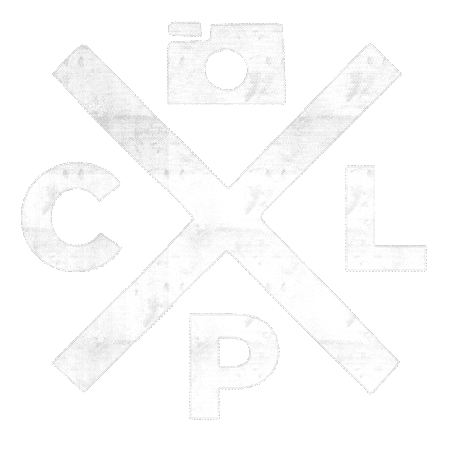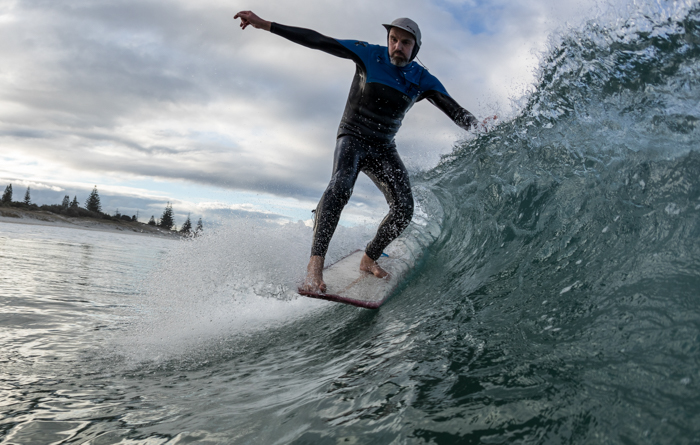The Collection Vol 1... Wazza's brainchild and new best seller from PhotoCPL Media HERE
Last week's E-Bomb went pretty nuts. I'm a stat and analytics watcher, trying to figure out what subscribers do and don't warm to... and then still probably ranting on about whatever. You can read last week's HERE
The Roger Hall interview in The Collection Vol 1 is one of the most challenging profiles I've ever done. It's not because Roger is hard to interview, it is because he has been interviewed so many times before for magazines and books. Those interviews have tended to be a bit Ra-Ra and concentrated on the positive. There is nothing wrong with that, but we needed more than gush for The Collection. One of the concepts of The Collection is to be more real, honest and wart'n'll. And that's pretty challenging when you're interviewing friends, peers and elders of the tribe. But having that inside view also means you know the questions to ask, the ones that will hopefully yield the good oil.
Rog, quite literally in his natural habitat at the Racecourse
Insert Breaking Bad reference here!
Here is the first third of the profile that featured in The Collection Vol 1. We entitled it Humble Pie, not because Roger is humble [he is though] more because he kept firm in his conviction to explore different designs and surf craft while very publicly being mocked. The mockers are now the ones eating humble pie.
Rog walking the talk
From The Collection Vol 1...
Some insight about meeting Roger; he connects with people very easily. His passion for crafting boards is infectious. He engages and shares detail that others would not be comfortable doing. He's humble and sincere. He drags you in. He's a perfectionist. He's kind of a nerdy mad professor. But it's that nerdy-ness that makes him the tinkerer, the inventor and the innovator.
Here's an example; most board makers get a blank from the manufacturer that blow the foam. These come in a variety of sizes, densities and a whole host of options, like multiple stringers, lightweight etc. The Shaper chooses the blank that they feel best suits the board you've asked for. Then shape the design out of that, a nice simple work flow right?
No, not Roger. He's found a way to make boards stronger. He gets custom blanks made, sans stringer [that bit of wood that runs down the middle of your board]. He has sourced his own stringers, he uses Poplar wood because of its strength and memory. You can't pop down to the hardware store and pick up Poplar planks. No one stocks Poplar; that would be too easy. Roger has his man that fells and harvests the trees in the Waikato.
Customs from the stringer up
Once dried and aged, the Poplar planks are then hand selected for each custom board. The plank is milled to the profile of that board. The stringerless blank is dissected and glued to this custom stringer. And now the blank is ready to start. Anal-retentive? Probably. But what it all means is that Roger has found a way to make a stronger, lighter board. The process of making foam blanks means the strongest part is the outside skins. By removing the least possible amount from the blank Roger's final product is stronger. But what a procedure!
Every system in the factory has been subjected to this type of rigor. Roger does everything just a little different, and maybe, just a little better. I remember interviewing him 20 years ago and he showed me his logbook. Every board shaped was faithfully recorded. Most shapers take measurements every foot along the length of a board to make sure their lines and cuts are right. Not Roger, he's every 3 inches. He has always been on a quest to remove the variables, to be concise.
And this isn't even the stuff that put him on the outer with his peers in the '70's. It was [and is] his lateral approach to board design. His personal conviction to ride boards that suited the waves.
"Yeah I become aware of the criticism early on, it was pretty hard to miss. From the start I had this wide open vision of what surfboards could be. They could be anything you could imagine. And there was a real case for riding lots of different surfboards, exploring different shapes and riding waves in different ways. Waves vary dramatically from place to place and from tide to tide. So why would you ride the same board. I mean, we're all individuals, so in theory we should all be surfing differently anyway. Surely surfboards should be different. I always had this idea that surfboards could be different from one another. So I just pursued that, it felt like a natural thing to do.
That was fine when I was in my little Beam Bay Bubble with my group of buddies and we were having fun. But then I decided to build a string of boards and put them in a shop. I went along to Wilkinson Sports in Whangarei, there weren't any surf shops in town then, they put a rack of my boards in there. And that's pretty much when the trouble started.
This was the early 1970's, there were the standard single fins in the rack, but there were also twin keel fishes there. I think the twin keel fishes was the first example of me doing things that I felt were a natural thing to do and then exposing it to other people. People weren't aware of these designs and that they were coming out of San Diego, that it was something that was happening in California. They weren't ready for it, the boards just looked weird to them. And they thought it was directly attributable to me."
Of course nowadays Twin Keel Fishes are in every hipster's quiver. But in the early '70's it was easy to dismiss Roger as well and truly being off on his own trip. In fact that is almost exactly what a senior member of the Northland scene levelled at the shop assistants. It undermined Roger's credibility with Wilkinson's and of course was hard not to take as a personal slight.
But Roger never really helped himself either, refusing to fit in, he stuck to his guns very publicly. There was a surf competition on at Sandy Bay. The scene was small in the '70's and early '80's, competitions were regarded as a meeting of the tribe. Also they were a chance to showcase your wares. At the time surfboards had dropped in length to under 6ft with a mix of Single Fins and Mark Richards inspired Twin Fins.
Well, Roger decides to go in the comp. He also decides to ride his newly shaped 7'11" longboard, talk about sticking your neck out to get your head lopped off.
"I had just returned from Hawaii, totally inspired by what Ben Aipa was doing. He'd paddle out on a long board and totally rip on that, go in and get his 6’5” Shortboard and blaze on that. It was a massive vindication of what I thought surfing could be.
At this time long boarding had completely died. The only place you saw ”an old dunger” was the lawn in front of the Lifesaving Club or the rare old diehard. I got back from Hawaii and shaped a long board. It was short by today's standards, but it was the longest blank I could find.
So I get up to Sandy Bay for the competition, I really didn't think anything of it, I was amped to ride my new board. As I pulled it out of the back of the van it was literally a 'you could hear a pin drop moment'. Then I could hear sniggering and giggling. As I looked down the row of cars there were a couple of well known guys theatrically holding their ribs, bent over, about to roll on the gravel. You know, it was one of those things, 'why would this guy want to ride a board like that. Why would you shape one and why the hell would you show up at a contest with it!' It was like 'what planet is this guy on!' kind of vibe."
So how'd he go? "Well the funny thing is I actually got a mention in the paper! I was still making boards at my parent's home. I was working away and Mum comes out on the balcony 'Listen to this' and I almost remember it word for word. Mum read it out ' Perhaps the most notable performance was that of Ruakaka surfer Roger Hall, who impressed, despite riding a long single fin surfboard'.
The thing that surprised me about all the criticism was why would they even care. So they couldn't get their head around what I was doing, but so what? Why should anyone really care about what Roger Hall is doing up in Ruakaka. The bit that was hard to take, was that I got that reaction, I didn’t see it coming and I didn’t understand it. And it was such a slap, you know? "
Despite the very vocal naysayers something was going on. By the early '80's Roger was getting his boards into a lot of shops. Surf stores are not Art Galleries, they stock stuff to sell it. "I did react to the negative reactions, in a way it did me a favour, because I dug my toes in. I resolved myself to, no, this feels right for me to be surfing these boards. And if it feels right for me, it's gotta feel right for other people. So yeah, I kind of thought I had a point to prove here.
The thing is, as much as I did get that negative reaction, I also got some really positive reaction. A guy in Gisborne, then a guy in Dunedin, then a guy in Christchurch, then someone in Wellington would get in touch; 'Hey I wouldn't mind one of those boards made, they look a lot of fun.'
I'd make the board and send it down. The local board makers didn't want a bar of making boards like this. So surfers ordering my boards didn't feel disloyal getting one. So slowly but surely I was sending boards to the four corners of New Zealand."
“While I'm copping the flack, here I am shipping these orders out.”
AND CUT.... wanna read the other 2/3's of the feature? Well you're going to have to find the book for that... Oh wait you could find it HERE :)
And speaking about interviews....
As I dislike being on the front of the lens, so too do I like being interviewed. It's just weird. Weird answering questions, not doing the asking. But I also know it's important as a freelancer to get yourself out there. Thanks to Reuben for being kind to me in the interview. You can read Reuben's Blog HERE
Reuben used 'Sundowner' as the opening image for the interview, which I liked a lot as it's a very fresh image. You can check it out larger HERE and LIKE it, Share it, Pin it, Tweet It, Email it...all of the options are on page...AND of course you could always BUY IT :)










